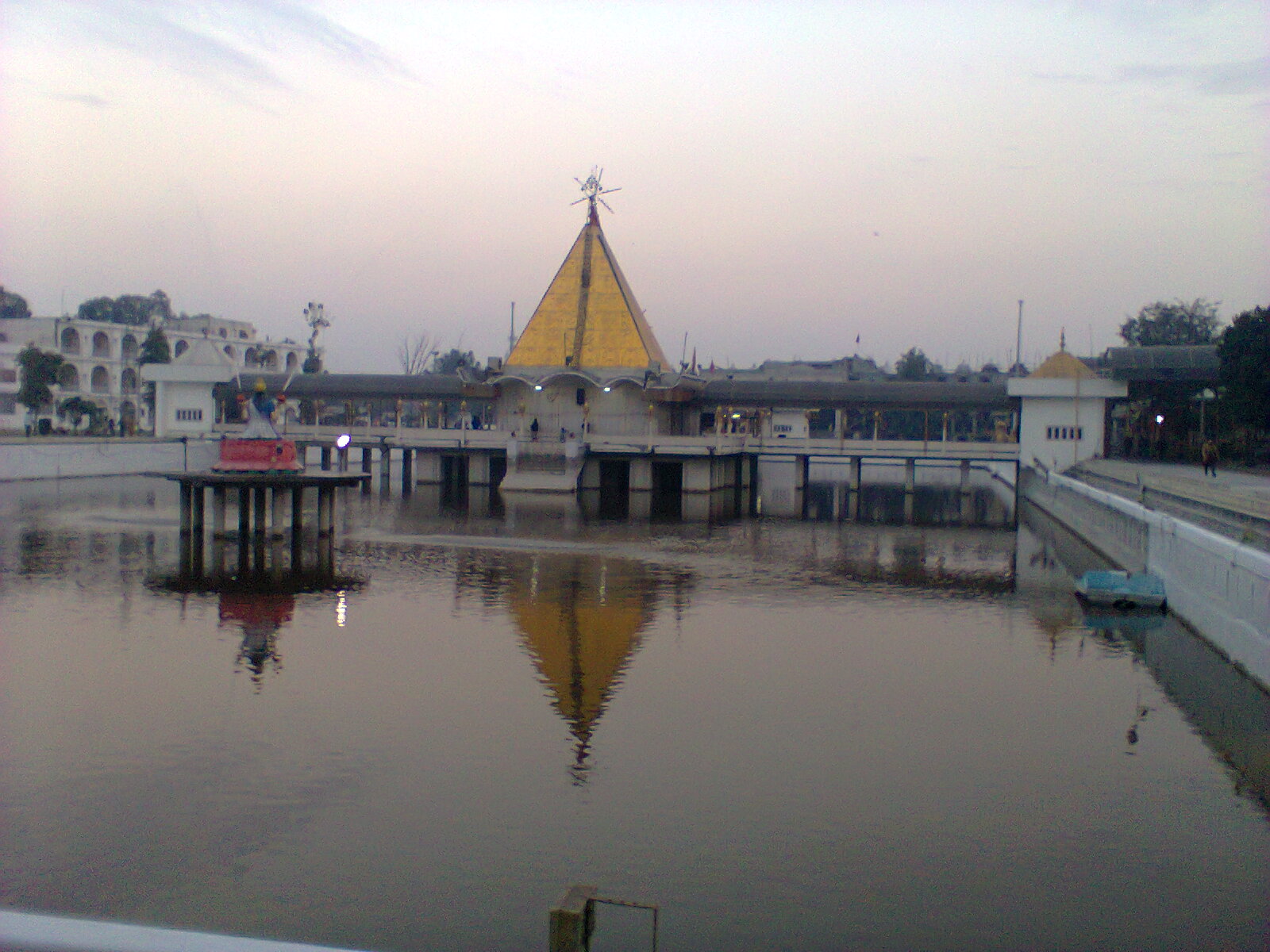|
Chaman Lal (writer)
Chaman Lal (born 27 August 1947 in Rampura Phul, Bathinda district Punjab) retired as a professor in Hindi translation from Jawaharlal Nehru University. He is now Honorary advisor to Bhagat Singh Archives and Resource Centre, Delhi Archives of Delhi Govt.cn date is March 2021 Books * The Bhagat Singh Reader * Understanding Bhagat Singh *Bhagat Singh's jail notebook *Bhagatasiṃha sampūrṇa dastāveja *Bhagat Singh-Hindi *Bhagat Singh key rajneetik dastavez *Bhagat Singh Sampuran Lekhan-Hindi-four volumes *Krantiveer Bhagat Singh:Abhyuodey aur Bhavishya *Bhagat Singh:Vicharan Inqlabi-Panjabi *Inqlabi Itihas de Sunehre Panne *Ghadar pary nayak:Kartar Singh Sarabha *Bhāratīya sāhitya meṃ dalita evaṃ strī-lekhana (Dalit & women writing in Indian literature) *Dalita aura aśveta sāhitya kucha vicāra *Hindī patrakāritā vividha āyāma *Yashpal ke Upanyason men raajnitik chetna *Pratinidhi Hindi Upanyas *Sahitya Sanskriti ka pragatisheel samajshashtriya avlokan ... [...More Info...] [...Related Items...] OR: [Wikipedia] [Google] [Baidu] |
Rampura Phul
Rampura Phul is a city in the Bathinda district in the Indian state of Punjab. Phul Town serves as a Tehsil for villages in nearby area. History Phul Village was founded in 1627 AD by Phul, the ancestor of the Phulkian family. His descendants went on to establish the princely states of Jind, Nabha, and Patiala in Punjab, India. Later, in 1680, Phul’s son Rama founded Rampura Village. Successfully raided the Bhattis and others including Hassan Khan and Muslim chief of Kot. Captured Kot and Bhatîân. Obtained the intendancy of the Jangal tract from Mohameddan Governor of Sirhind. Choudhary Rama Singh founded Rampura in 1680. Rama and Tiloka were baptized with Khande da amrit at the hands of the Tenth Sikh Guru, Guru Gobind Singh at Damdama Sahib. Guru Gobind Singh in a self written Hukamnama addressed to the two sons of Phul, Rama and Tiloka on 2 August 1696 called upon them for help in his fight with the Hill rajas proclaiming “tera ghar mera asey”. Rama and Tiloka late ... [...More Info...] [...Related Items...] OR: [Wikipedia] [Google] [Baidu] |
Bathinda District
Bathinda district is in Malwa region of Punjab, India. The district encompasses an area of 3,385 square kilometers. By area, Bathinda district is the second-largest in Punjab, after Ludhiana district. It is bounded by Faridkot district and Moga district on the north, Muktsar district on the west, Barnala and Mansa districts on the east, and the state of Haryana on the south. Bathinda is cotton producing belt of Punjab. History The district of Bathinda came into existence with the formation of the PEPSU in 1948. It had its headquarters at Faridkot, which were shifted to Bathinda in 1952. Demography According to the 2011 census Bathinda district has a population of 1,388,525, roughly equal to the nation of Eswatini or the US state of Hawaii. This gives it a ranking of 352nd in India (out of a total of 640). The district has a population density of . Its population growth rate over the decade 2001–2011 was 17.37%. Bathinda has a sex ratio of 865 females for ... [...More Info...] [...Related Items...] OR: [Wikipedia] [Google] [Baidu] |
Punjab India
Punjab () is a state in northwestern India. Forming part of the larger Punjab region of the Indian subcontinent, the state is bordered by the Indian states of Himachal Pradesh to the north and northeast, Haryana to the south and southeast, and Rajasthan to the southwest; by the Indian union territories of Jammu and Kashmir to the north and Chandigarh to the east. To the west, it shares an international border with the identically named Pakistani province of Punjab, and as such is sometimes referred to as East Punjab or Indian Punjab for disambiguation purposes. The state covers an area of 50,362 square kilometres (19,445 square miles), which is 1.53% of India's total geographical area, making it the 19th-largest Indian state by area out of 28 Indian states (20th largest, if Union Territories are considered). With over 27 million inhabitants, Punjab is the 16th-largest Indian state by population, comprising 23 districts. Punjabi, written in the Gurmukhi script, is the m ... [...More Info...] [...Related Items...] OR: [Wikipedia] [Google] [Baidu] |
Hindi
Modern Standard Hindi (, ), commonly referred to as Hindi, is the Standard language, standardised variety of the Hindustani language written in the Devanagari script. It is an official language of India, official language of the Government of India, alongside English language, English, and is the ''lingua franca'' of North India. Hindi is considered a Sanskritisation (linguistics), Sanskritised Register (sociolinguistics), register of Hindustani. Hindustani itself developed from Old Hindi and was spoken in Delhi and neighbouring areas. It incorporated a significant number of Persian language, Persian loanwords. Hindi is an Languages with official status in India, official language in twelve states (Bihar, Gujarat , Mizoram , Maharashtra ,Chhattisgarh, Haryana, Himachal Pradesh, Jharkhand, Madhya Pradesh, Rajasthan, Uttar Pradesh, Uttarakhand), and six Union territory, union territories (Andaman and Nicobar Islands, Delhi, Chandigarh, Dadra and Nagar Haveli and Daman and Di ... [...More Info...] [...Related Items...] OR: [Wikipedia] [Google] [Baidu] |
Jawaharlal Nehru University
Jawaharlal Nehru University (JNU; ISO: Javāharalāla Neharū Viśvavidyālaya) is a public research university located in Delhi, India. It was established in 1969 and named after Jawaharlal Nehru, India's first Prime Minister. The university is known for leading faculties and research emphasis on social sciences and applied sciences. History Jawaharlal Nehru University was established in 1969 by an act of parliament. It was named after Jawaharlal Nehru, India's first Prime Minister. G. Parthasarathy was the first vice-chancellor. Prof. Moonis Raza was the Founder Chairman and Rector. The bill for the establishment of Jawaharlal Nehru University was placed in the Rajya Sabha on 1 September 1965 by the then-Minister of Education, M. C. Chagla. During the discussion that followed, Bhushan Gupta, member of parliament, voiced the opinion that this should not be yet another university. New faculties should be created, including scientific socialism, and one thing that this uni ... [...More Info...] [...Related Items...] OR: [Wikipedia] [Google] [Baidu] |
List Of Writers Who Have Returned The Sahitya Akademi Award
The Sahitya Akademi Award is a literary honour in India, which the Sahitya Akademi, India's National Academy of Letters, annually confers on writers of the most outstanding books of literary merit published in any of the 22 languages of the 8th Schedule to the Indian constitution as well as in English and Rajasthani language. Established in 1954, the award comprises a plaque and a cash prize of ₹ 1,00,000. The award's purpose is to recognise and promote excellence in Indian writing and also acknowledge new trends. The annual process of selecting awardees runs for the preceding twelve months. The plaque awarded by the Sahitya Akademi was designed by the Indian film-maker Satyajit Ray. Prior to this, the plaque occasionally was made of marble, but this practice was discontinued because of the excessive weight. During the Indo-Pakistan War of 1965, the plaque was substituted with national savings bonds. Recipients Other literary honors Sahitya Akademi Fellowships They ... [...More Info...] [...Related Items...] OR: [Wikipedia] [Google] [Baidu] |
Punjabi-language Writers
Punjabi, sometimes spelled Panjabi, is an Indo-Aryan languages, Indo-Aryan language native to the Punjab region of Pakistan and India. It is one of the most widely spoken native languages in the world, with approximately 150 million native speakers. Punjabi is the most widely-spoken first language in Pakistan, with 88.9 million native speakers according to the 2023 Pakistani census, and the 11th most widely-spoken in India, with 31.1 million native speakers, according to the 2011 Census of India, 2011 census. It is spoken among a Punjabi diaspora, significant overseas diaspora, particularly in Canada, the United Kingdom, the United States, Australia, and the Arab states of the Persian Gulf, Gulf states. In Pakistan, Punjabi is written using the Shahmukhi alphabet, based on the Persian alphabet, Perso-Arabic script; in India, it is written using the Gurmukhi, Gurmukhi alphabet, based on the Brahmic scripts, Indic scripts. Punjabi is unusual among the Indo-Aryan languages and t ... [...More Info...] [...Related Items...] OR: [Wikipedia] [Google] [Baidu] |
Punjabi Hindus
Punjabi Hindus are adherents of Hinduism who identify ethnically, linguistically, culturally, and genealogically as Punjabis and are natives of the Punjab region of the Indian subcontinent. Punjabi Hindus are the third-largest religious group of the Punjabi community, after the Punjabi Muslims and the Punjabi Sikhs. While Punjabi Hindus mostly inhabit the Indian state of Punjab, as well as Haryana, Himachal Pradesh, Delhi, and Chandigarh today, many have ancestry across the greater Punjab region, which was partitioned between India and Pakistan in 1947. Punjabi Hindus comprise a diverse range of castes, including Brahmins (Saraswat, Mohyal), upper castes like Khatris, Rajputs, Aroras, Vaishyas (Baniyas like Agarwal, Khandelwal, Maheshwari, Oswal), and artisans and service-based communities like Lohar, Sunar, Kumhar, Nai, Dhobi. A number of castes such as Saini, Gujjar, Prajapati are classified as OBC whilst Chamar, Balmiki, Mazhabi come under the scheduled caste class ... [...More Info...] [...Related Items...] OR: [Wikipedia] [Google] [Baidu] |
People From Bathinda District
The term "the people" refers to the public or common mass of people of a polity. As such it is a concept of human rights law, international law as well as constitutional law, particularly used for claims of popular sovereignty. In contrast, a people is any plurality of persons considered as a whole. Used in politics and law, the term "a people" refers to the collective or community of an ethnic group or nation. Concepts Legal Chapter One, Article One of the Charter of the United Nations states that "peoples" have the right to self-determination. Though the mere status as peoples and the right to self-determination, as for example in the case of Indigenous peoples (''peoples'', as in all groups of indigenous people, not merely all indigenous persons as in ''indigenous people''), does not automatically provide for independent sovereignty and therefore secession. Indeed, judge Ivor Jennings identified the inherent problems in the right of "peoples" to self-determination, as i ... [...More Info...] [...Related Items...] OR: [Wikipedia] [Google] [Baidu] |
Novelists From Punjab, India
A novelist is an author or writer of novels, though often novelists also write in other genres of both fiction and non-fiction. Some novelists are professional novelists, thus make a living writing novels and other fiction, while others aspire to support themselves in this way or write as an avocation. Most novelists struggle to have their debut novel published, but once published they often continue to be published, although very few become literary celebrities, thus gaining prestige or a considerable income from their work. Description Novelists come from a variety of backgrounds and social classes, and frequently this shapes the content of their works. Public reception of a novelist's work, the literary criticism commenting on it, and the novelists' incorporation of their own experiences into works and characters can lead to the author's personal life and identity being associated with a novel's fictional content. For this reason, the environment within which a novelist works a ... [...More Info...] [...Related Items...] OR: [Wikipedia] [Google] [Baidu] |
1947 Births
It was the first year of the Cold War, which would last until 1991, ending with the dissolution of the Soviet Union. Events January * January–February – Winter of 1946–47 in the United Kingdom: The worst snowfall in the country in the 20th century causes extensive disruption of travel. Given the low ratio of private vehicle ownership at the time, it is mainly remembered in terms of its effects on the railway network. * January 1 – The ''Canadian Citizenship Act, 1946, Canadian Citizenship Act'' comes into effect, providing a Canadian citizenship separate from British law. * January 4 – First issue of weekly magazine ''Der Spiegel'' published in Hanover, Germany, edited by Rudolf Augstein. * January 10 – The United Nations adopts a resolution to take control of the free city of Trieste. * January 15 – Elizabeth Short, an aspiring actress nicknamed the "Black Dahlia", is found brutally murdered in a vacant lot in Los Angeles; the mysterious case is never solv ... [...More Info...] [...Related Items...] OR: [Wikipedia] [Google] [Baidu] |





